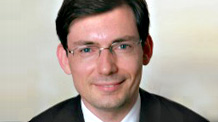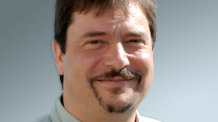CeNTech R & D
Nano-Materials
Prof. Dr. Rudolf Bratschitsch
The main research area of the Bratschitsch group is ultrafast quantum optics with solid-state nanosystems. Our goal is to investigate and exploit ultrafast processes on the nanoscale. We study robust nanoscopic light emitters based on semiconductor quantum structures or defect centers in diamond. To increase the interaction of light with these nano-objects we use dielectric and metallic nanostructures. In addition to these investigations we work in the field of ultrafast spintronics, magnetism, and magneto-plasmonics.
Contact / Details
Dr. Cristian A. Strassert
The research group of Dr. C. Strassert developed a new class of trifunctional hybrid nanoparticles that are able to simultaneously target, label and photoinactivate pathogenic, antibiotic-resistant bacteria, using industry-standard dyes and a well-known solid support. Furthermore, the group focuses on the design, synthesis and characterization of electroluminescent metal complexes for Organic Light Emitting Diodes technology (OLEDs). Recently they discovered that it is possible to reach up to 90% photoluminescence quantum yield in gelating nanoassemblies of organometallic compounds by judiciously choosing the substituents of the ancillary ligands.
Contact / Details
Prof. Dr. Gerhard Wilde
The research group of Prof. G. Wilde focuses on:
1. Nanoporous materials and surface nanostructuring
2. Interface-controlled thermodynamics
3. Plasticity and atomic mobility at the nanoscale
4. Nanostructure evolution and dynamics in metallic glasses
5. High resolution analyses of defects and residual mechanical strains

MEET (Münster Electrochemical Energy Technology)
In the light of the current promotion of renewable energy sources and the vision of a future based on "electromobility", the development of high-performance energy storage devices has taken on a central role. The Meet Battery Research Center brings together basic scientific research and industrial applications at one location ("science-to-business" approach). To this purpose, it works together closely both with other scientific institutions and with partners from industry and small and medium-sized companies. The working group, situated in the CeNTech, focuses on surface analysis of battery materials on the makro- and nano-scale using ambient pressure Agilent AFM system, a Shimadzu Nanoindenter and a Horiba dispersive raman microscope.
Contact / Details


